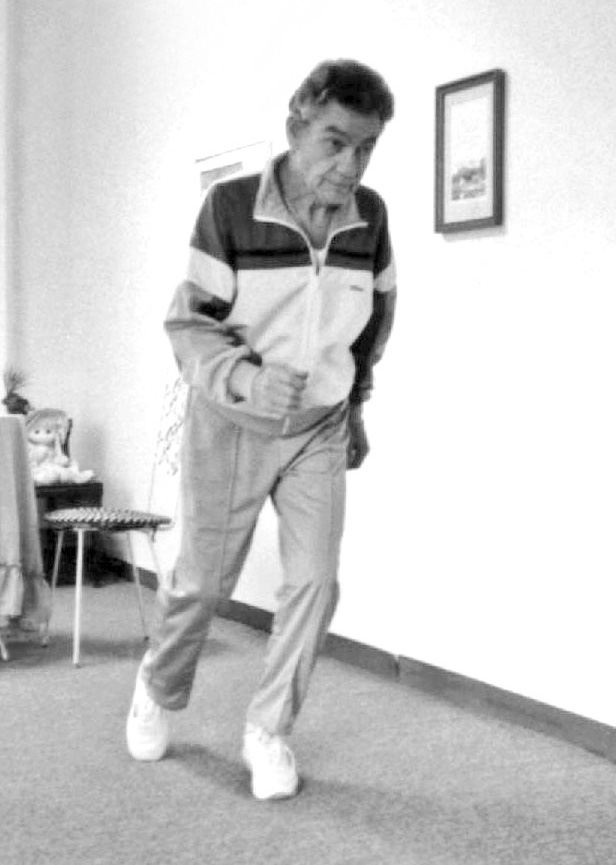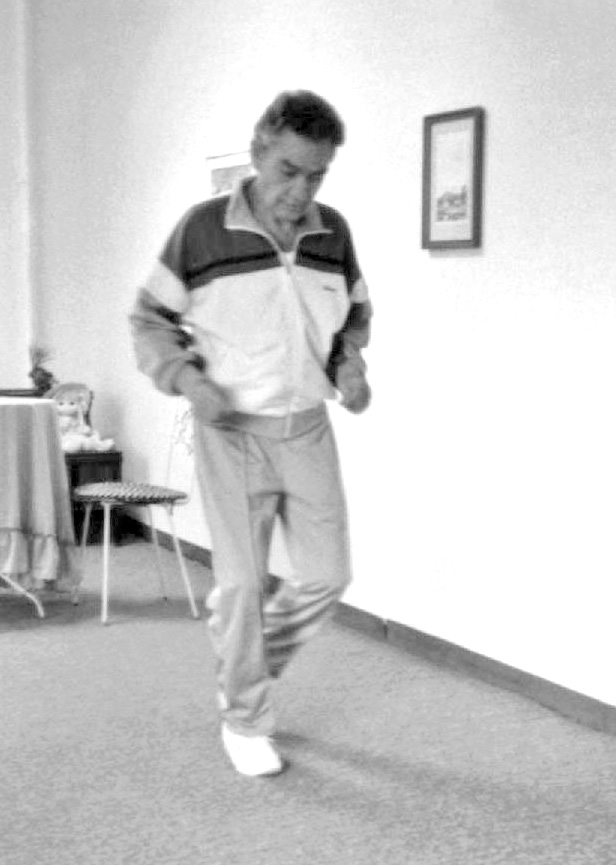There are many opinions on how to jog. Bernie Falk’s view on jogging is centered around its contribution to total body movement and the long-range effects on well-being.
Bernie Falk’s first advice is that jogging is done on the toes; more precisely, the heels never touch the ground. This is the way young children run but not the way most adults do, and therefore quite a controversial point.
The toes provide a basic cushion for the movement, acting as a shock-absorber for the body. Imagine jogging only on the heels, and the point is clear; the jolt to the ankles, knees, and back would be severe. Jogging on the toes and ball of the foot forces the body forward and smoothes the entire movement.
Jogging on the toes is also quite efficient.
The flow is lighter. The body does not bounce about. The smoother and lighter one’s jog, the farther one can go. Using the toes also serves another purpose–the development of additional strength in the toes and knees, a special concern for walking.
You will notice that the use of the toes in movement is stressed in many of Falk’s exercises, for instance, the Toe Walk, Single Leg Hops, and Jump Rope. All of these use the toes for support. The toes provide the cushion for shock, and force the body into a naturally balanced position.
The stride itself should be relatively long. This promotes a better muscle pattern for a full walk. The toes and knees get a better workout, the upper legs gain additional strength, and the movement is more fluid and balanced.
Bernie has also offered the following tips:
- The “feel” of running is like falling forwards.
- The legs “catch” rather than push the body.
- The butt is forward and “under” the back, not sticking out in the rear.
- The shoulders should be down and relaxed (counting 1-2-3-4-5-6-7-8-9-10 very fast will help teach the idea)
- The right arm and left leg (and its opposite pair) are “connected.”
Developing in these ways makes jogging easier and even more beneficial.
The goal is to make running effortless.
The is a point few joggers ever realize. When you run, pay attention. Where are the toes? The arms? Are the shoulders relaxed? Do the feet take equal weight? And so on. The purpose of paying attention is to find out how to make jogging easy. Jogging is not an excuse to let the mind drift through the day’s events. Try to understand how one actually jogs, sense when something is easier, and study it.
In Bernie’s words, the goal is — effortless effort.
The most difficult issue for me has been developing a symmetrical jog. This apparently simple issue has required constant attention for years. I still favor my right leg, point my left foot outwards, and let my left knee cave inwards. It amazes me that, before Bernie Falk pointed it out, I had never given the matter a thought. An unsymmetrical jog? Who? Me?
What is the point of all this?
Jogging itself is a splendid exercise. Jogging can strengthen the body where it is weak and helps achieve better movement throughout the day. Moreover, it is especially beneficial if it is done well and does not reproduce the imbalanced patterns that underlie other problems.
Selection of Exercises:
Disclaimer:
I am not a qualified physician. As with all exercise programs, when using these routines and examples shown, you need to use common sense. To reduce and avoid injury, you may want to check with your doctor before beginning any fitness program. By performing these exercises, you are performing them at your own risk. Theoryofexercise.com will not be responsible or liable for any injury or harm you sustain as a result of this information shared on this website.


